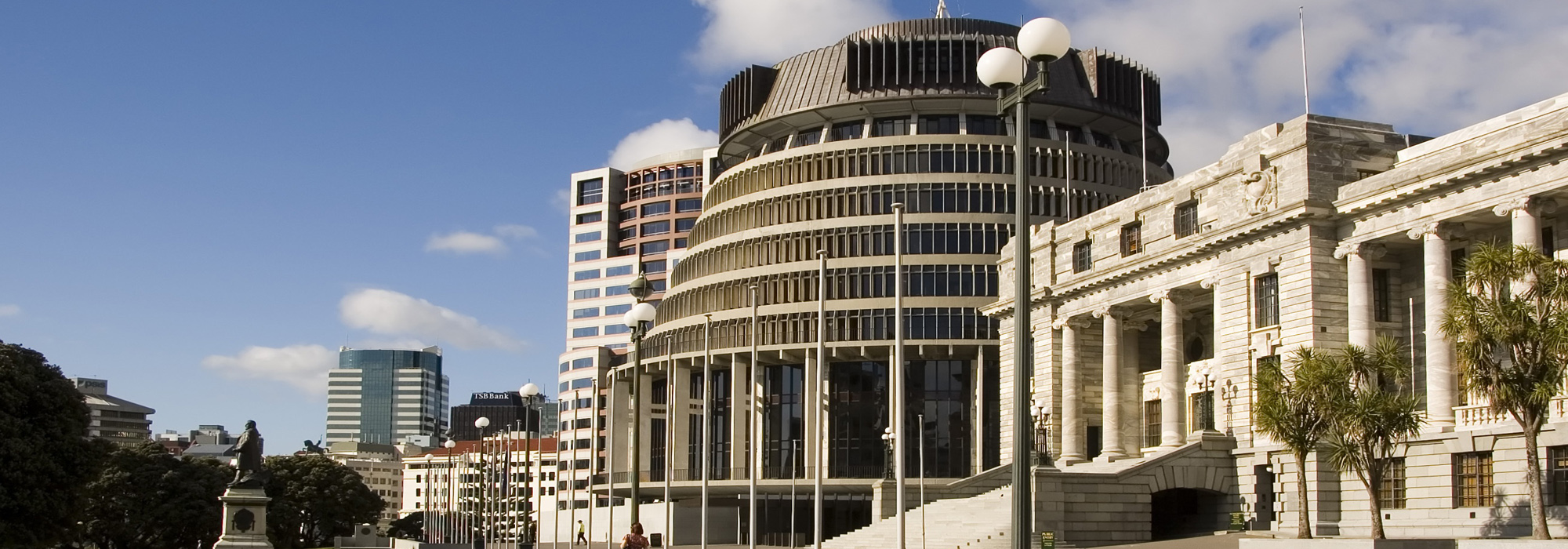
Tolstoy famously said that while all happy families are alike, each unhappy family is unhappy in its own way. A similar insight might apply to democracies and their electoral systems. When a country is happy with how it votes, voting works relatively unobtrusively to apportion legislative and government power amongst those competing for it. But the particular reasons why a country becomes unhappy with its electoral system differ markedly.
With this cautionary note in mind, New Zealand’s experience with electoral reform in the 1990s (and its revisiting of the issue in 2011) may have some relevance to Canada’s journey down this path. The nations share a Westminster-style constitution, although New Zealand’s is closer to the original model than is Canada’s. The two nations also inherited first-past-the-post (FPTP) voting systems from the United Kingdom. And they both apparently have come to see problems with using that method of choosing members of Parliament.
However, the problems they see are different. New Zealand’s experience of FPTP bore out Duverger’s law, which holds that this method of voting tends to produce two dominant political parties. Between 1935 and 1996, either the National Party or the Labour Party always won a majority of seats in the nation’s House of Representatives, gaining it the right to form the government. However, in New Zealand FPTP worked in a particularly disproportionate fashion. Parliamentary majorities in no way reflected the actual distribution of votes between the nation’s various political parties; indeed, in 1978 and 1981 the National Party obtained a majority of parliamentary seats with fewer overall votes than the opposition Labour Party received.
Not only did FPTP produce single party governments with a somewhat dubious popular mandate, New Zealand’s constitutional and political system then handed such governments enormous power. The Parliament has been unicameral since the upper house Legislative Council, which functioned much as the Canadian Senate, was abolished in 1951. Without a written constitution or equivalent to the Charter, there are no formal legal constraints on Parliament’s authority to legislate. Internal party discipline was (and is) strongly enforced in New Zealand, requiring MPs to always hew to the policies and legislative proposals advanced by cabinet.
The consequence of mixing a very disproportionate FPTP voting system, the dominance in the cabinet of back-bench MPs, and a strong commitment to parliamentary sovereignty became apparent through the 1980s and early 1990s. A National government headed by a particularly autocratic prime minister, Sir Robert Muldoon, was replaced in 1984 by an avowedly reformist Labour administration. This government used the threat of looming national insolvency to usher in a host of neoliberal economic and social reforms under the claim that “there is no alternative.” By 1990, the public had tired of the pace of change and voted in a National government again, which explicitly promised to curtail the austerity. That promise was immediately broken, with even more swinging cuts to social welfare and public pensions, introduced in 1991’s “mother of all budgets.”
Therefore, New Zealand’s adoption of electoral reform occurred against a backdrop of deep disillusionment with politics and politicians generally, which fuelled a sense that the existing voting system had failed to enable the public to control their representatives effectively. In an effort to assuage those concerns, the National government felt compelled to deliver on a promise it made while it was in opposition — to allow the public a direct say on electoral reform. It is notable that neither the National government nor the Labour opposition really wanted such change to take place, it was forced on reluctant political actors by simmering public discontent.
New Zealand’s adoption of electoral reform occurred against a backdrop of deep disillusionment with politics and politicians generally, which fuelled a sense that the existing voting system had failed.
The people’s direct say occurred in two stages. The first, a stand-alone indicative referendum in 1992, asked the voting public two separate questions: Did they want to retain or change the existing FPTP system; and which of four alternative voting systems would they prefer?
Fifty-five percent of registered voters took part, with 85 percent voting against retaining FPTP and 71 percent indicating the mixed-member proportional (MMP) system was their preferred alternative. This support for MMP reflected the earlier recommendation of a Royal Commission on the Electoral System — a recommendation that had proved too ambitious for the then Labour Government in 1986, but which served to unify the views of those who sought some alternative to FPTP.
The majority vote in this first referendum effectively forced the government into holding a second referendum, held alongside the 1993 general election. Voters were given a straight choice between FPTP and MMP. It attracted an 85 percent turnout, with 53.9 percent voting for MMP and 46.1 percent voting for FPTP. This bare majority result in favour of MMP automatically lead to the Electoral Act 1993 coming into force, which put in place a new MMP system.
MMP has been used in seven general elections since then. As expected, it put an end to all-powerful, single party governments, with practice instead being for either the National Party or the Labour Party to form a government after negotiating the support of a range of minor parties. However, those governing arrangements have proved relatively stable, with only one government failing to last its full three-year term. Furthermore, as Jack Nagel has found:
MMP has had a strongly positive performance as judged by several tests from contemporary democratic theory. Parliamentary majorities have been based on electoral majorities or near-majorities. The party of the median voter has always been a party of government or, in one instance, a party allied with the government. All parties, and the Māori minority, have participated in or influenced governments a significant share of the time; and no party has been perpetually in power. Minor parties have influenced legislation, but have seldom been able to impose polices that were strongly objectionable to a majority of voters.
Not surprisingly, therefore, when the New Zealand public was asked again (somewhat redundantly) in a 2011referendum whether they wished to change voting systems, it demurred with an increased majority of 58 percent to 42 percent. MMP is thus in New Zealand for the long term.
Given the specific circumstances of New Zealand’s experiences, what (if any) relevance has it for Canada? I think I can tentatively draw three lessons. First, electoral reform in New Zealand primarily was driven by popular calls for change and not by elite-level negotiations. While politicians played a role in establishing the mechanisms that allowed change to occur (by establishing the Royal Commission and setting up a referendum process), they did so only reluctantly and in response to intense pressure. Furthermore, the final decision to change to MMP was one that both major political parties (along with most of their individual MPs) opposed, so no question of partisan advantage tainted the outcome.
Second, using referendums to change the voting system has somewhat normalized this process for those governmental decisions regarded as having serious, long-term constitutional or symbolic importance. For example, the current National government recently asked the public directly whether it wished to change the national flag, because only the people could decide such a significant matter. Therefore, asking people what electoral system they want is not just a one-off event; it may trigger longer-term expectations among the electorate.
Finally, the particular form of electoral change that New Zealand adopted was a direct response to the circumstances in which that change took place. That is, an electorate grown weary of powerful, single-party governments embraced MMP’s greater proportionality and the resulting fragmentation of political power as a positive thing. Therefore, the first question Canadians should be asking when considering electoral reform is, what are the problems they are trying to fix? Because ultimately it is the public’s response to that particular inquiry that should decide what change, if any, will occur.
Photo: Albert H. Teich / Shutterstock.com
This article is part of the Electoral Reform special feature.
Do you have something to say about the article you just read? Be part of the Policy Options discussion, and send in your own submission. Here is a link on how to do it. | Souhaitez-vous réagir à cet article ? Joignez-vous aux débats d’Options politiques et soumettez-nous votre texte en suivant ces directives.







